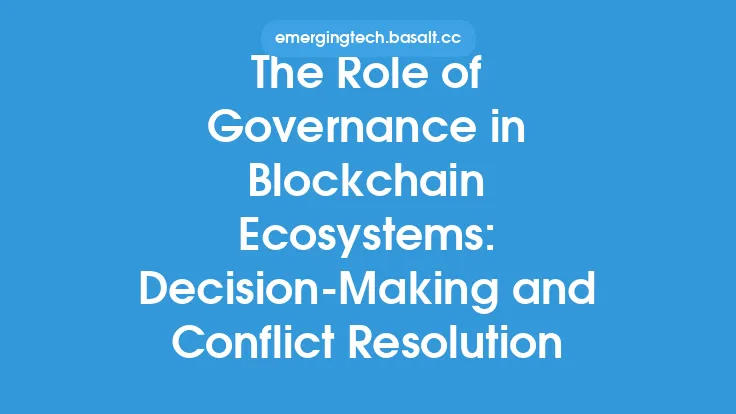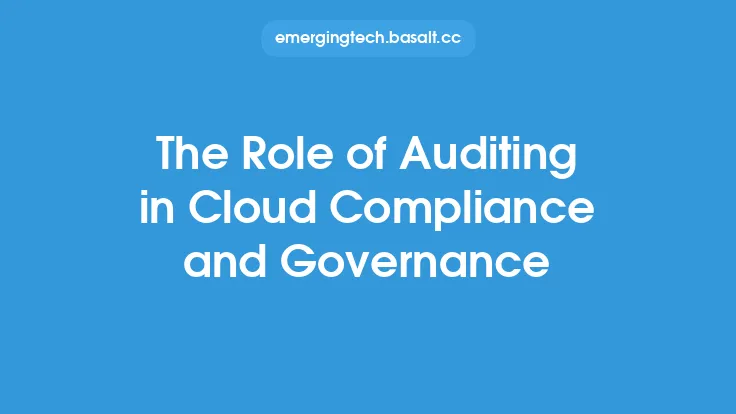The blockchain ecosystem has grown exponentially over the years, with various industries and governments exploring its potential. As the technology continues to evolve, the need for effective governance and regulatory compliance has become increasingly important. Blockchain governance refers to the set of rules, processes, and protocols that govern the behavior of participants within a blockchain network. It encompasses various aspects, including decision-making, conflict resolution, and regulatory compliance. In this article, we will delve into the landscape of blockchain governance and regulatory compliance, exploring the key concepts, challenges, and best practices.
Introduction to Blockchain Regulatory Compliance
Blockchain regulatory compliance refers to the process of ensuring that blockchain-based systems and applications adhere to relevant laws, regulations, and industry standards. The regulatory landscape for blockchain is complex and constantly evolving, with different countries and jurisdictions having their own set of rules and guidelines. For instance, the European Union's General Data Protection Regulation (GDPR) has significant implications for blockchain-based systems that handle personal data. Similarly, the United States has a complex regulatory framework, with different agencies such as the Securities and Exchange Commission (SEC) and the Commodity Futures Trading Commission (CFTC) having oversight over various aspects of blockchain.
Blockchain Governance Models and Regulatory Compliance
Blockchain governance models can be broadly categorized into centralized and decentralized models. Centralized models rely on a single entity or a group of entities to make decisions and govern the network. Decentralized models, on the other hand, rely on a distributed network of participants to make decisions and govern the network. Decentralized governance models, such as Decentralized Autonomous Organizations (DAOs), offer a high degree of autonomy and decentralization but can be challenging to regulate. Regulatory compliance in decentralized governance models requires a deep understanding of the underlying technology and the ability to adapt to changing regulatory requirements.
Regulatory Challenges in Blockchain Governance
One of the significant challenges in blockchain governance is the lack of clear regulatory guidelines. The blockchain ecosystem is global, and regulatory requirements can vary significantly across different countries and jurisdictions. This can create confusion and uncertainty for blockchain-based systems and applications, making it challenging to ensure regulatory compliance. Additionally, the pace of innovation in the blockchain ecosystem is rapid, and regulatory frameworks often struggle to keep pace. This can lead to a situation where regulatory requirements are unclear or inconsistent, creating challenges for blockchain-based systems and applications.
Best Practices for Blockchain Regulatory Compliance
To ensure regulatory compliance, blockchain-based systems and applications should follow best practices such as conducting thorough risk assessments, implementing robust governance frameworks, and maintaining transparent and auditable records. It is also essential to stay up-to-date with changing regulatory requirements and to engage with regulatory bodies and industry associations to ensure that the regulatory framework is clear and consistent. Furthermore, blockchain-based systems and applications should prioritize transparency, accountability, and security, as these are essential for building trust and ensuring regulatory compliance.
The Role of Industry Associations and Regulatory Bodies
Industry associations and regulatory bodies play a crucial role in shaping the regulatory landscape for blockchain. These organizations can provide guidance, support, and advocacy for blockchain-based systems and applications, helping to ensure that regulatory requirements are clear and consistent. For instance, the Blockchain Association is a trade association that represents the blockchain industry and works to promote clear and consistent regulatory guidelines. Similarly, regulatory bodies such as the Financial Action Task Force (FATF) provide guidance and support for regulatory compliance, helping to ensure that blockchain-based systems and applications adhere to relevant laws and regulations.
The Future of Blockchain Governance and Regulatory Compliance
The future of blockchain governance and regulatory compliance is likely to be shaped by emerging trends and technologies such as decentralized finance (DeFi), non-fungible tokens (NFTs), and central bank digital currencies (CBDCs). These trends and technologies will require new and innovative approaches to governance and regulatory compliance, and will likely involve greater collaboration and coordination between industry associations, regulatory bodies, and governments. Additionally, the increasing adoption of blockchain technology across various industries will require more robust and effective governance frameworks, as well as clearer and more consistent regulatory guidelines.
Conclusion
In conclusion, blockchain governance and regulatory compliance are critical components of the blockchain ecosystem. The regulatory landscape is complex and constantly evolving, and blockchain-based systems and applications must prioritize transparency, accountability, and security to ensure regulatory compliance. By following best practices, engaging with regulatory bodies and industry associations, and staying up-to-date with changing regulatory requirements, blockchain-based systems and applications can navigate the regulatory landscape and ensure compliance with relevant laws and regulations. As the blockchain ecosystem continues to evolve, it is essential to prioritize effective governance and regulatory compliance to build trust, promote adoption, and ensure the long-term success of blockchain technology.





